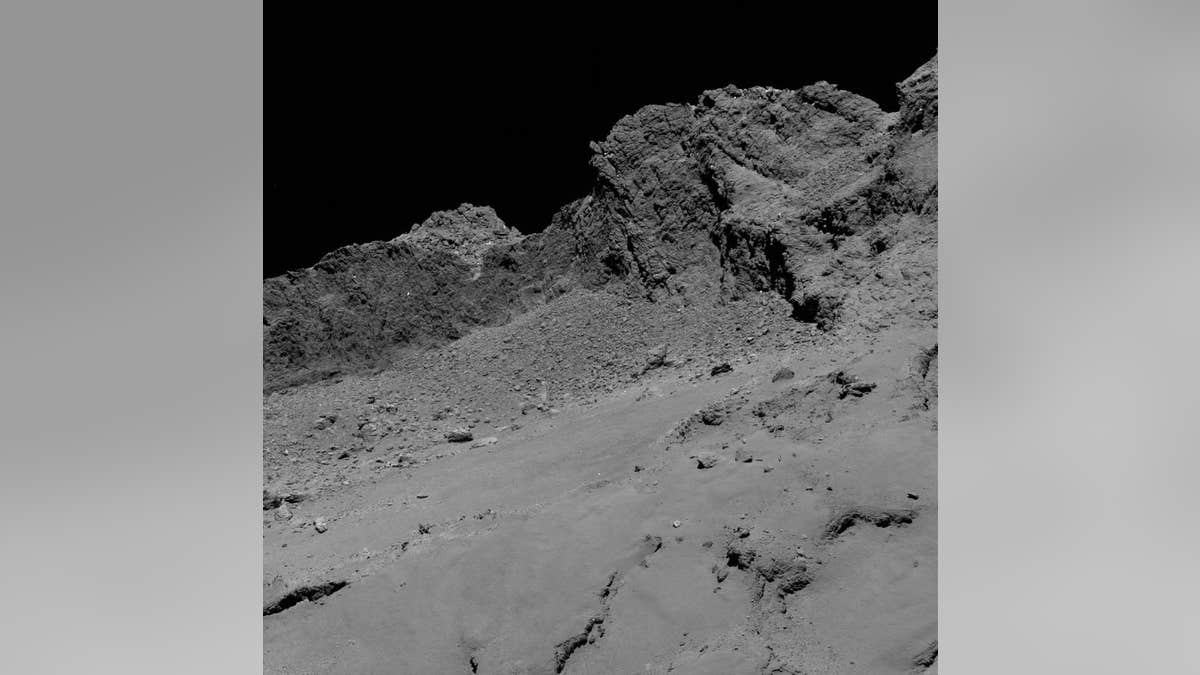
The OSIRIS narrow-angle camera aboard the Space Agency's Rosetta spacecraft captured this image of comet 67P/Churyumov-Gerasimenko on September 30, 2016, from an altitude of about 10 miles above the surface during the spacecraft’s controlled descent. (ESA/Rosetta/MPS/UPD/LAM/IAA/SSO/INTA/UPM/DASP/IDA)
After a journey of billions of miles and a historic cosmic rendezvous, the Rosetta spacecraft met its end after a “controlled impact” with the comet it had been studying.
The European Space Agency (ESA) confirmed a loss of signal from the probe on Friday at 1:19 pm, Central European Summer Time. The maneuver to slowly crash the craft was deliberate— a way to study the comet up close at the tail end of the mission.
“Thanks to a huge international, decades-long endeavour, we have achieved our mission to take a world-class science laboratory to a comet to study its evolution over time, something that no other comet-chasing mission has attempted,” Alvaro Giménez, ESA’s director of science, said in a statement.
First launched in 2004, Rosetta arrived at the two-lobed comet called 67P/Churyumov–Gerasimenko in 2014. It deployed another craft called Philae, which descended onto the comet— but instead of sticking the landing, it bounced, and eventually settled in another part of the comet. The ESA lost communication with it, even if they eventually regained it for a short period of time in the summer of 2015.
Related:
Earlier in September, the space agency announced they’d finally found Philae, imaging it in a crack of the comet with two of its legs clearly visible.
This final move for Rosetta— which began its descent to the comet from about 12 miles above it— concludes a historic mission: never before had a craft orbited a comet or sent a lander down onto one. The ESA said that the craft and the comet were traveling too far away from the sun for the mission to continue; it had spent over two years in the challenging area around the comet.
The scientific results of the mission include the fact that comets are like ambassadors from the time period that marked the beginning of our solar system, 4.6 billion years ago, the space agency said.
“As well as being a scientific and technical triumph, the amazing journey of Rosetta and its lander Philae also captured the world’s imagination, engaging new audiences far beyond the science community,” Mark McCaughrean, ESA’s senior science advisor, said in the statement. “It has been exciting to have everyone along for the ride.”
Follow Rob Verger on Twitter: @robverger